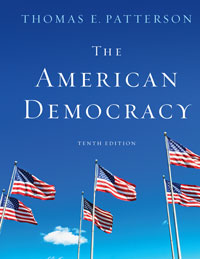1 A) $10,000 B) $22,000 C) $28,000 D) $39,000 E) $44,000 2 A) 2 B) 5 C) 10 D) 20 E) 40 3 A) the 1990 Earned Income Tax Credit Act B) the 2000 Equity Assurance Bill C) the 1985 Social Reform Act D) the 1996 Welfare Reform Act E) the Social Security Act 4 A) income is distributed equally. B) income is distributed more equally than in any other industrialized democracy. C) income is distributed equally, more equally than in any other industrialized democracy. D) citizens in the top fifth get 50 percent of all income. E) citizens in the lowest fifth get 30 percent of all income. 5 A) are usually terminated after ten weeks. B) provide a recipient with an average of one-half their employed wage. C) are funded by federal payroll taxes. D) can be extended by the president, but only with approval of the Senate. E) provide a recipient with 100% of their employed wage, but that amount decreases with each week in unemployment. 6 A) 5 B) 10 C) 15 D) 20 E) 25 7 A) created in 1865. B) supported by political conservatives when it was first established. C) supported by a wide bipartisan margin when it was first established. D) created in 1965 and was supported by liberals when first established. E) created in 1935. 8 A) Single mothers will lose a portion of their benefits if they refuse to cooperate in identifying the father of their children for child support purposes. B) Unmarried teenage mothers qualify for welfare benefits only if they remain in school and live with a parent or legal guardian. C) Within two years, the head of most families on welfare will have to find work or risk the loss of benefits. D) Americans' eligibility for federal cash benefits is limited to no more than five years in their lifetime. E) All these answers are correct. 9 A) tax breaks. B) the construction of low-income housing. C) rent vouchers. D) repairs to meet health standards. E) None of these answers is correct. 10 A) About one-third of all revenue comes from the federal government. B) About one-half of all revenue comes from the federal government. C) About two-thirds of all revenue comes from local government. D) About 90 percent of all revenue comes from state and local governments. E) None of these answers is correct. 11 A) G.I. Bill B) No Child Left Behind Act C) Morrill Act D) Elementary and Secondary Education Act E) Higher Education Act 12 A) 1850s B) 1870s C) 1890s D) 1930s E) 1960s 13 A) They were both created when Republicans controlled the presidency. B) They were both created when Democrats controlled the presidency. C) They were both created when Republicans controlled Congress. D) They were both created when Democrats controlled Congress. E) They were both created when the Democrats controlled both the presidency and the Congress. 14 A) cash-assistance B) earned-income C) in-kind D) tax-credit E) free-rider 15 A) 1929 B) 1933 C) 1935 D) 1937 E) 1941 16 A) the United States B) Great Britain C) Germany D) France E) Belgium 17 A) States can choose to impose more restrictive rules in some areas. B) States cannot allow exceptions to any of the rules. C) The eligibility guidelines are initially created by each state and then modified by the federal government. D) States that choose to modify eligibility rules must then provide 100% of funding. E) The eligibility rules do not apply to unwed mothers that are pregnant or have been the victims of domestic violence. 18 A) the determination of eligibility of an individual for assistance B) the creation of effective welfare-to-work programs C) the funding of the state portions of TANF responsibility D) training case workers to counsel aid recipients E) keeping track of how aid recipients spend their individual funding 19 A) was created in 1960. B) provides health care for all Americans who are not retired. C) provides health care for the poor and middle-income Americans. D) was created in 1965 and provides health care for the poor. E) None of these answers is correct. 20 A) 1 percent payroll tax on employees and employers B) 3.5 percent payroll tax on employees and employers C) 6.2 percent payroll tax on employees and employers D) 10.5 percent payroll tax on employees and employers E) 20 percent payroll tax on employees and employers





